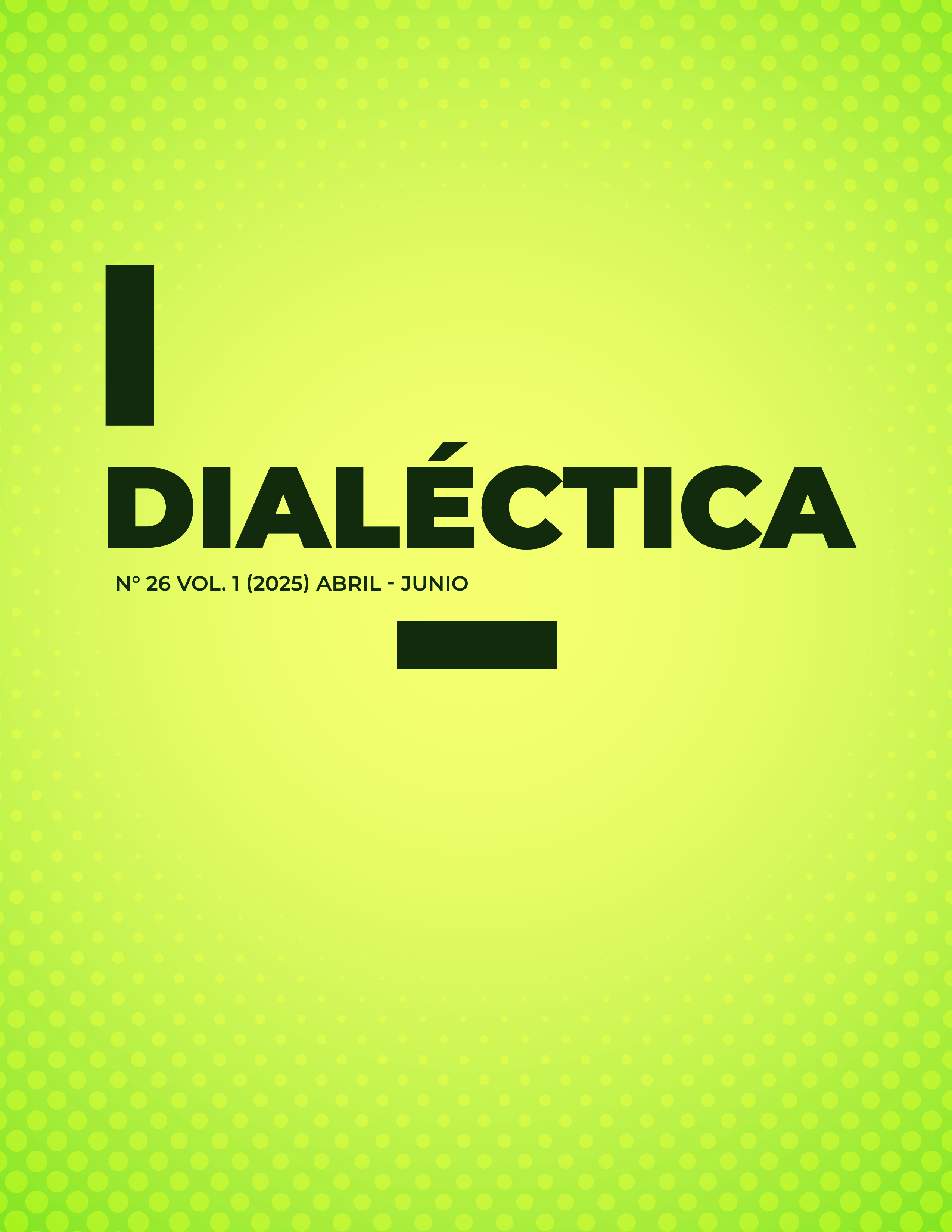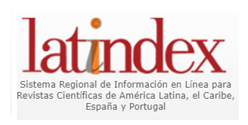THEORETHICS OF THE DIDACTIC SUITABILITY OF THE ONTOSEMIOTIC APPROACH APPLIED TO THE CONSTRUCTION OF THE CONCEPT OF REAL FUNCTIONS IN BASIC SECONDARY EDUCATION IN COLOMBIA.
DOI:
https://doi.org/10.56219/dialctica.v1i26.4424Keywords:
Theoretics, didactic suitability, ontosemiotic approach, real functionsAbstract
Mathematical knowledge, its teaching and learning is a topic that has been of great interest within Mathematics Education, and also highlights its relational and multidimensional character, since teachers, content and students only achieve a level of understanding when they relate to each other, within a context impregnated by their own particular society and culture. Thus, the Ontosemiotic Approach to Knowledge and Instruction of Mathematics (EOS) provides tools that facilitate the integration of theoretical notions and points of view on the teaching and learning of mathematical knowledge, highlighting the Didactic Suitability (ID), as a lawful criterion of relevance and adequacy of knowledge put into action, educational agents, and resources used in a mathematical study, both to establish whether what was done was adequate or appropriate or to guide how it should be done. From this perspective, a theoretical approach associated with the ID of EOS in the construction of the concept of real function in Secondary Basic Education in Colombia was generated. A qualitative study was carried out through an interpretative perspective, interviewing teachers and students of the Colegio Agroecológico Holanda in Santander-Colombia, virtual and face-to-face meetings were scheduled for the collection of information. Grounded Theory and the use of the Constant Comparative Method were used to interpret and analyze the information, and the quality of the study was established through credibility, auditability and transferability. The notion of ID provides original and significant elements to guide the teaching-learning processes of real functions.
Downloads
References
Almaguer, F. (2007). An onto-semiotic approach to representations in mathematics education. For the Learning of Mathematics 27 (2).
Arias, F. y Rodríguez, K. (2014). Formación matemática en la educación secundaria desde la perspectiva de los estudiantes que inician estudios en la Universidad de Costa Rica. Disponible: http://ve.scielo.org/pdf/pdg/v35n2/art08.pdf. [Consulta: 2023, Marzo 13]
Azcarate, C., y Defelou, J. (1990). Funciones y gráficas. Madrid: Síntesis.
Bachelard, G. (1978). El racionalismo aplicado. Buenos Aires: Paidós.
Barberá, E., y Gómez, C. (1996). Las estrategias de enseñanza y evaluación en matemáticas. En C. Moreno, y I. Solé, El asesoramiento psicopedagógico: una perspectiva profesional y constructivista (págs. 383-404). Madrid: Alianza.
Berciano, A., Ortega del Rincón, T. & Puerta, M. (2015). Aprendizajes de las interpolaciones gráficas y algebraicas. Análisis comparativo. Enseñanza de las Ciencias, 33(3), 43-58. DOI: https://doi.org/10.5565/rev/ensciencias.1454
Brousseau, B. (1997). Theory of didactical situations in mathematics. Dordrecht: Kluwer A.
Brousseau, G. (1997). Fondements et méthodes de la didactiques des mathématiques. Recherches en Didactique des Mathématiques, 7 (2), 33-115.
Carlson, M. y Oehrtman, M. (2005). Key Aspects of Knowing and Learning the Concept of Function. Research Sampler, MAA
D’Amore, B., Godino, J. y Fandiño, M.I. (2008). Competencias y matemática. Bogotá: Magisterio.
Devia, R. y Pinilla, C. (2012). La enseñanza de la matemática: de la formación al trabajo de aula. Disponible: http://www.saber.ula.ve/bitstream/handle/123456789/36831/articulo15.pdf?sequence=1&isAllowed=y. [Consulta: 2023, Marzo 13]
Duval, R. (1999). Semiosis y pensamiento humano. Registros semióticos y aprendizajes intelectuales. (M. Vega, Trad.) Cali: Síntesis. Editorial Archidona
Eisenberg, T. (1991). Functions and associated learning difficulties. En D. Tall, (Ed.) Advanced mathematical thinking. Dordrecht: Kluwert, p. 140-152. DOI: https://doi.org/10.1007/0-306-47203-1_9
Eisenberg, T. (1992). On the Development of a Sense for Functions, The Concept of Function, Aspects of Epistemology and Pedagogy, G. Harel and E. Dubinsky (Eds.), MAA Notes Volume 25, 153 - 174.
Font, V. y Godino, J. D. (2006). La noción de configuración epistémica como herramienta de análisis de textos matemáticos: su uso en la formación de docente. Educaçao Matemática Pesquisa, 8 (1), 67-98.
Font,V. (2018). The philosophy of mathematics education. London, UK: Falmer Press.
Freudenthal, H. (1967). Why to teach mathematics so as to be useful. Educational Studies in Mathematics, 1, 3-8. DOI: https://doi.org/10.1007/BF00426224
Freudenthal, H. (1983). Didactical phenomenology of mathematical structures. Dordrecht: Reidel.
Freudenthal, H. (1991). Revisiting mathematics education. China Lectures. Dordrecht: 19 Kluwer Academic Publishers.
Godino J. D. y Llinares, S. (2000). El interaccionismo simbólico en educación. matemática. Educación Matemática, 12 (1) 70-92. DOI: https://doi.org/10.24844/EM1101.04
Godino, J. C., Batanero, C., Font, V. y Giacomome, B. (2016). Articulando conocimientos y competencias del docente de matemáticas: el modelo CCDM. Investigación en Educación Matemática XX. Málaga: Ed. SEIEM, 2016. p. 288-297.
Godino, J. C. (2022). La idoneidad didáctica como herramienta de análisis y reflexión sobre la práctica del docente de matemáticas. [Documento en línea]. Disponible: http://villarrica.uc.cl/files/matematica/trabjaosnac_int/CI%2003.pdf. [Consulta: 2020, Noviembre 25]
Godino, J. D. (2002). Un enfoque ontológico y semiótico de la cognición matemática. Recherches en Didactique des Mathématiques 22, (2/3), 237–284.
Godino, J. D. (2007). Mathematical concepts, their meaning, and understanding. En: L. Puig y A. Gutierrez(Eds.), Proceedings of the 20th Conference of the International Group for the Psychology of Mathematics Education (pp. 2-417-424), Universidad de Valencia.’
Godino, J. D. (2013). Un enfoque ontológico y semiótico de la cognición matemática. Didactiques des Mathematiques, 22 (2/3), 237-284
Godino, J. D. (2014). Teoría de las funciones semióticas. Un enfoque ontológico-semiótico de la cognición e instrucción matemática. Departamento de Didáctica de la Matemática. Universidad de Granada. [Documento en línea]. Disponible: URL: http://www.ugr.es/local/jgodino/indice_tfs.htm. [Consulta: 2020, Noviembre 25]
Godino, J. D. (2024). Enfoque ontosemiótico en educación matemática. Fundamentos, herramientas y aplicaciones. McGraw Hill-Aula Magna. ISBN:9788410066519.
Godino, J. D. Batanero, C. y Font, V. (2007). The onto-semiotic approach to research in mathematics education. ZDM. The International Journal on Mathematics Education, 39 (1-2), 127-135.
Godino, J. D. y Batanero, C. (1994). Significado institucional y personal de los objetos matemáticos. Didactique des Mathématiques, 14 (3), 325-355.-195). Dordrecht: Kluwer, A. P.
Godino, J. D. y Font, V. (2003). Razonamiento algebraico y su didáctica para maestros. Departamento de Didáctica de las Matemáticas. Universidad de Granada. ISBN: 84-932510-7-0. [Documento en línea]. Disponible: http://www.ugr.es/local/jgodino/. [Consulta: 2020, Noviembre 25]
Godino, J. D., (2009). Análisis y valoración de la idoneidad didáctica de procesos de estudio de las matemáticas. Paradigma, XXVII (2), 221–252.
Godino, J. D., Batanero, C. y Font, V. (2007). The onto-semiotic approach to research in mathematics education. ZDM. The International Journal on Mathematics Education, 39 (1-2), 127-135. DOI: https://doi.org/10.1007/s11858-006-0004-1
Godino, J. D., Bencomo, D., Font, V. y Wilhelmi, M. R. (2006) Análisis y valoración de la idoneidad didáctica de procesos de estudio de las matemáticas. Paradigma, XXVII (2), 221-252.
Godino, J. D., Contreras, A. y Font, V. (2006). Análisis de procesos de instrucción basado en el enfoque ontológico-semiótico de la cognición matemática. Recherches en Didactiques des Mathematiques, 26 (1), 39-88.
Godino, J. D., Font, V., Wilhelmi, M. R. y Castro, C. de (2009). Aproximación a la dimensión normativa en Didáctica de la Matemática desde un enfoque ontosemiótico. Enseñanza de las Ciencias, 27(1), 59–76 DOI: https://doi.org/10.5565/rev/ensciencias.3663
Hitt F. (1997). Sistemas semióticos de representación del concepto de función y su relación con problemas epistemológicos y didácticos. Investigaciones en Educación Matemática Vol. I (Editor F. Hitt), Grupo Editorial Iberoamérica, México.
Hitt F. (2000). Funciones en Contexto. Proyecto sobre Visualización Matemática. Departamento de Matemática Educativa. México. Latinoamericana Vol.23, 43-61.
Hitt, F. (2014). Nuevas tendencias en la enseñanza del cálculo: la derivada en ambientes TICE. Departamento de Matemática. Universidad Quebec.
Janvier, C. (1987). Problems of representation in the teaching and learning of mathematics. Hillsdale, New Jersey: Lawrence Erlbaum A.P.
Lincoln, Y. y Guba, E. (1985). Naturalistic Inquiri. Beverly Hills: Sage Publications. DOI: https://doi.org/10.1016/0147-1767(85)90062-8
Lupo, C. (2015) Capacitación de Docente en Matemática Contextual: Proyecto Exitoso en Brasil. [Documento en línea]. Disponible: http://www.cord.org/ uploadedfiles/Brazil %5Freport%5FSpanish.pdf. [Consulta: 2020, Noviembre 25]
MEN. (1998). Lineamientos Curriculares. Bogotá: Libros y libres S.A.
Moreira, M. A. (2011). La teoría de los campos conceptuales de Vergnaud, la enseñanza de las ciencias y la investigación en el área. Publicación UFGRS, 1-28.
Morin, E. (1994). Introducción al pensamiento complejo. Barcelona: Gedisa.
Peirce, C. S. (1931-58). Collected Papers of Charles Sanders Peirce, 8 vols., C. Hartshorne, P. Weiss y A. W. Burks (eds.). Cambridge: Harvard University Press
Pérez Serrano, G. (2007). Desafíos de la Investigación Cualitativa. Santiago de Chile, Centro de Formación de Docente
Piaget, J. (1975). Psicología y pedagogía. Barcelona: Ariel.
Piaget, J. (1979). Tratado de lógica y conocimiento 0científico (1). Naturaleza y métodos de la epistemología. Buenos Aires: Paidós.
Planchart O. (1999). Matemática desde el Contexto Biológico. TI- CARES Hispano. Volumen 2.
Radford, L. (2006). Introducción. Semiótica y educación matemática. Revista Latinoamericana de Matemática Educativa, Número especial, pp. 7-22.
Rocher, G., 1996, Introducción a la sociología general. Barcelona, Herder
Rodríguez, J. (2015). Metodología de la Investigación cualitativa. Aljibe.
Serrano, J. M., y Pons, R. M. (2011). El desarrollo del conocimiento matemático.
Strauss, A. L. y Corbin, J. (2002). Bases de la investigación cualitativa: técnicas y procedimientos para desarrollar la teoría fundada (1. ed.). Medellín: Editorial Universidad de Antioquia.
Ugalde, W. J. (2014). Funciones: desarrollo histórico del concepto y actividades de enseñanza-aprendizaje. Matemática, Educación e Internet, 14(1), 1-48. DOI: https://doi.org/10.18845/rdmei.v14i1.1564
Zúñiga, M. I. (2009). Un estudio acerca de la construcción del concepto de función, visualización en alumnos de un curso de Cálculo I. Tesis Doctoral no publicada. Tegucigalpa: Universidad Pedagógica Nacional Francisco de Morazán.
Downloads
Published
How to Cite
Issue
Section
License

This work is licensed under a Creative Commons Attribution-NonCommercial-ShareAlike 4.0 International License.
La revista Dialéctica conserva los derechos patrimoniales (copyright) de las obras publicadas, que favorece y permite la reutilización de los mismos bajo la licencia Creative Commons Atribución-NoComercial-CompartirIgual 4.0 , por lo cual se pueden copiar, usar, difundir, transmitir y exponer públicamente, siempre que se cite la autoría y fuente original de su publicación (revista, editorial, URL y DOI de la obra), no se usen para fines comerciales u onerosos y se mencione la existencia y especificaciones de esta licencia de uso. Si remezcla, transforma o crea a partir del material, debe distribuir su contribución bajo la misma licencia del original.











